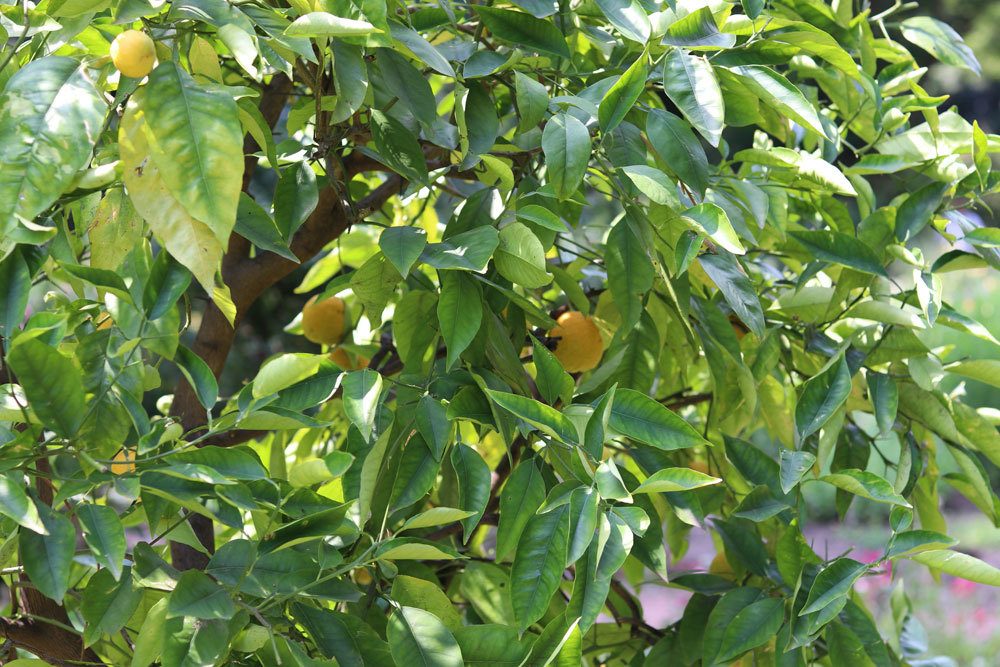When you repot a lemon tree, the most important thing is the timing and the substrate. Our instructions show what is important in the process.
- use appropriate soil
- Change the soil regularly
- Wait for spring or early summer
- repot new plants directly if possible
- observe correct procedure
Contents
Choosing the right time
To repot or change the soil in a lemon tree is quite simple, provided that some criteria are taken into account. These include:
- Sprouting
- Size of the planter
- Pest infestation
- used soil
- growth difficulties
Repotting is done either in the spring before the first sprouting or in early summer when the formation of new shoots is completed. However, there are exceptions when the time for changing the substrate should be chosen differently.
This includes, among other things, the roots grow out of the tub. If this is the case, action should be taken as early as possible. Winter is an exception. The plant can absorb no or hardly any nutrients during this time. Therefore, the risk of chemical burns on the roots is increased.
If there is an important reason for repotting the lemon tree in winter, it is recommended to proceed differently. Important in this case is:
- bright location or planting lamp
- Increase temperature
- Increase the amount of water
This will “wake up” the plant from its winter dormancy and it will be able to absorb more nutrients within a few weeks. Repotting can thus be brought forward. While winter dormancy is important for the health of the plant, repotting should take priority in the event of pest infestation, disease or damage to the roots.
Use appropriate substrate
One of the most important factors in repotting is choosing the right soil. For the lemon tree, you can choose to use ready-made citrus soil from the store or a specially prepared mixture.
A favorable mixture in each case is one part:
- humus plant soil
- mature compost
- peat
In addition, balls of expanded clay, sand or coconut fiber can be used as water reservoirs. These help to keep the soil moist on the one hand and prevent waterlogging on the other. They also loosen up the substrate.
Repot lemon tree – instructions
If you want to repot a lemon tree, the procedure is very simple. However, in doing so, you need to follow the appropriate steps. These are:
- The right time: just before or after budbreak is ideal. However, you can also achieve this condition by artificially created conditions. Therefore, it does not depend on the season.
- thorough change: repotting is not only to remove old soil. It also reduces the risk of disease, rot and the spread of pests. Existing damage to the roots can also be treated. However, this must be done very thoroughly. After carefully removing the dry soil, you can additionally rinse the root ball.
- Check for damage and parasites: You should remove dead areas of the root with clean scissors or a clean knife. If larvae or other pests are found, the appropriate remedies and measures should be used. These can vary considerably depending on the species.
- Drainage: A drainage layer should be placed at the bottom of the planter. Suitable for this purpose are, for example, gravel, stones and shards of clay. This layer prevents waterlogging from occurring.
- Pay attention to the height: The trunk should not be covered more than it was in the old pot. Therefore, you should first apply a layer of soil on top of the drainage layer, which also has the required height when compacted.
- Water well: Watering in floods is not recommended after repotting. However, the soil must be able to drain well after this. If residues collect in the planter, waterlogging can occur despite drainage.
Frequently asked questions
How often should repot the lemon tree?
This depends on several factors. Among them, for example, the size of the container, growth and the selected soil. With good care, it is usually sufficient to change the soil every two to three years.
How big should the container be?
Citrus plants are not hardy. Therefore, they can only be cultivated in pots and wintered indoors. The larger the planter, the easier it is to care for. The water storage is greater. The same applies to the amount of nutrients. However, it must be expected that the roots initially grow very strongly and initially form less fruit.
When do I need to fertilize after repotting?
If high-quality soil has been used, it often already contains sufficient nutrients for the first year of growth. If this is not the case, a citrus fertilizer should be applied. As a light nutrient supply, the lemon peels themselves can also be added to the substrate.


